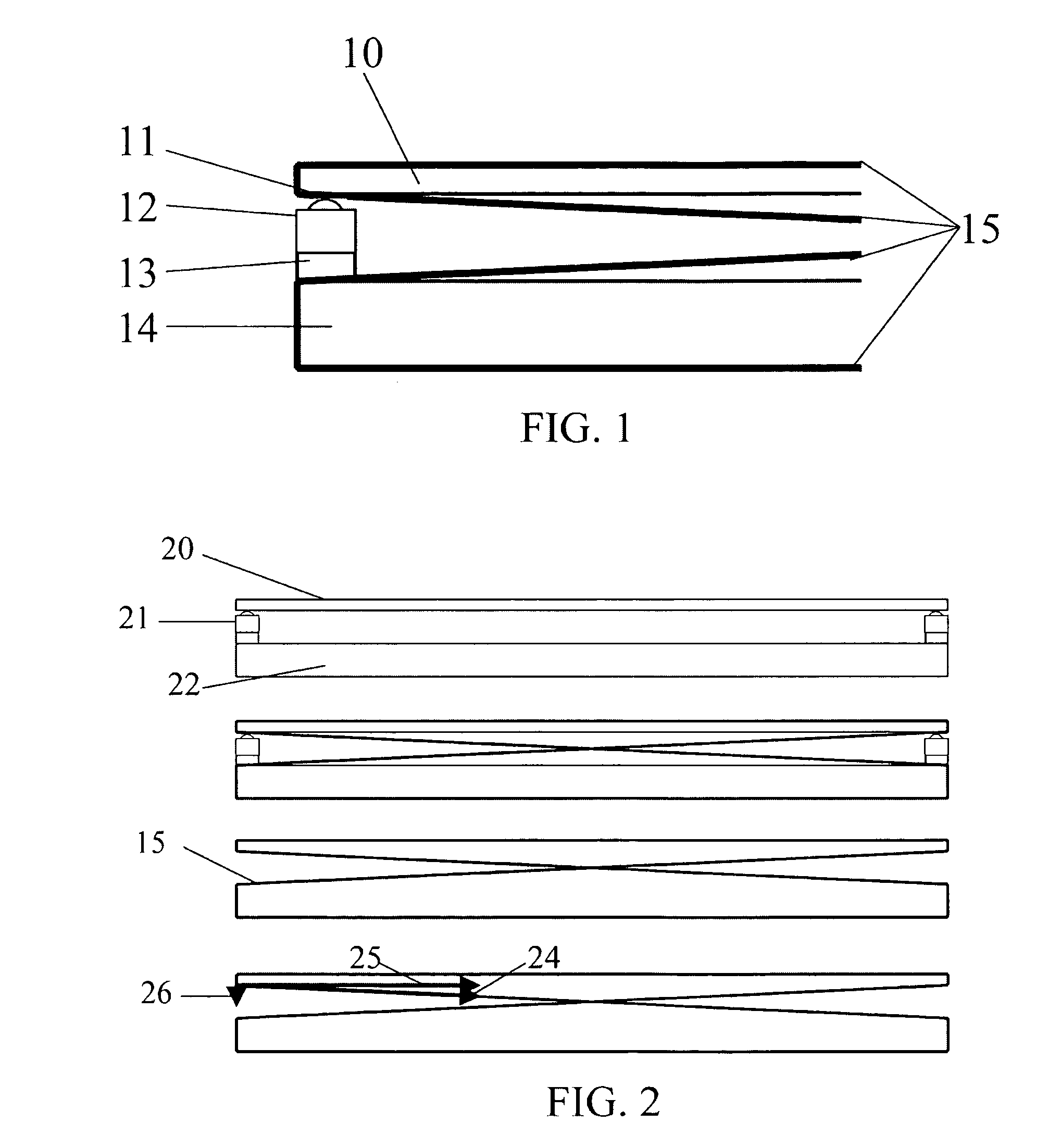Suspension for a pressure sensitive touch display or panel
a touch display or panel, pressure sensitive technology, applied in the direction of washstands, lighting support devices, instruments, etc., can solve the problems of poor production yield, dead spots, and further reduced clarity, and achieve cost-effective effects
- Summary
- Abstract
- Description
- Claims
- Application Information
AI Technical Summary
Benefits of technology
Problems solved by technology
Method used
Image
Examples
Embodiment Construction
[0038]The present invention is a suspension platform for a touch sensitive input panel or display especially suited for use in cellular phones and personal digital assistants (PDAs), PC Tablets, as well as laptops, PCs, office equipment, medical equipment, TV Monitors, or any other device that uses touch sensitive displays or panels.
[0039]The suspension platform presumes the use of a force sensor-based touch screen implementation, such as the technology disclosed in existing patent filings and publications such as U.S. application 2008003374 for “integrated Feature for Frictionless Movement of Force Sensitive Touch Screen, filed Mar. 14, 2008 by Brown et. al., and U.S. patent application Ser. No. 12 / 009,964 for “Integrated Force Sensitive Lens and Software”, filed 23 Jan. 2008 by Mölne et. al.
[0040]As is described in these patents, it is known to use a plurality (e.g., four) force sensors to locate a touch point on a touch screen or touch pad. However, prior mechanical implementatio...
PUM
 Login to View More
Login to View More Abstract
Description
Claims
Application Information
 Login to View More
Login to View More - R&D
- Intellectual Property
- Life Sciences
- Materials
- Tech Scout
- Unparalleled Data Quality
- Higher Quality Content
- 60% Fewer Hallucinations
Browse by: Latest US Patents, China's latest patents, Technical Efficacy Thesaurus, Application Domain, Technology Topic, Popular Technical Reports.
© 2025 PatSnap. All rights reserved.Legal|Privacy policy|Modern Slavery Act Transparency Statement|Sitemap|About US| Contact US: help@patsnap.com



